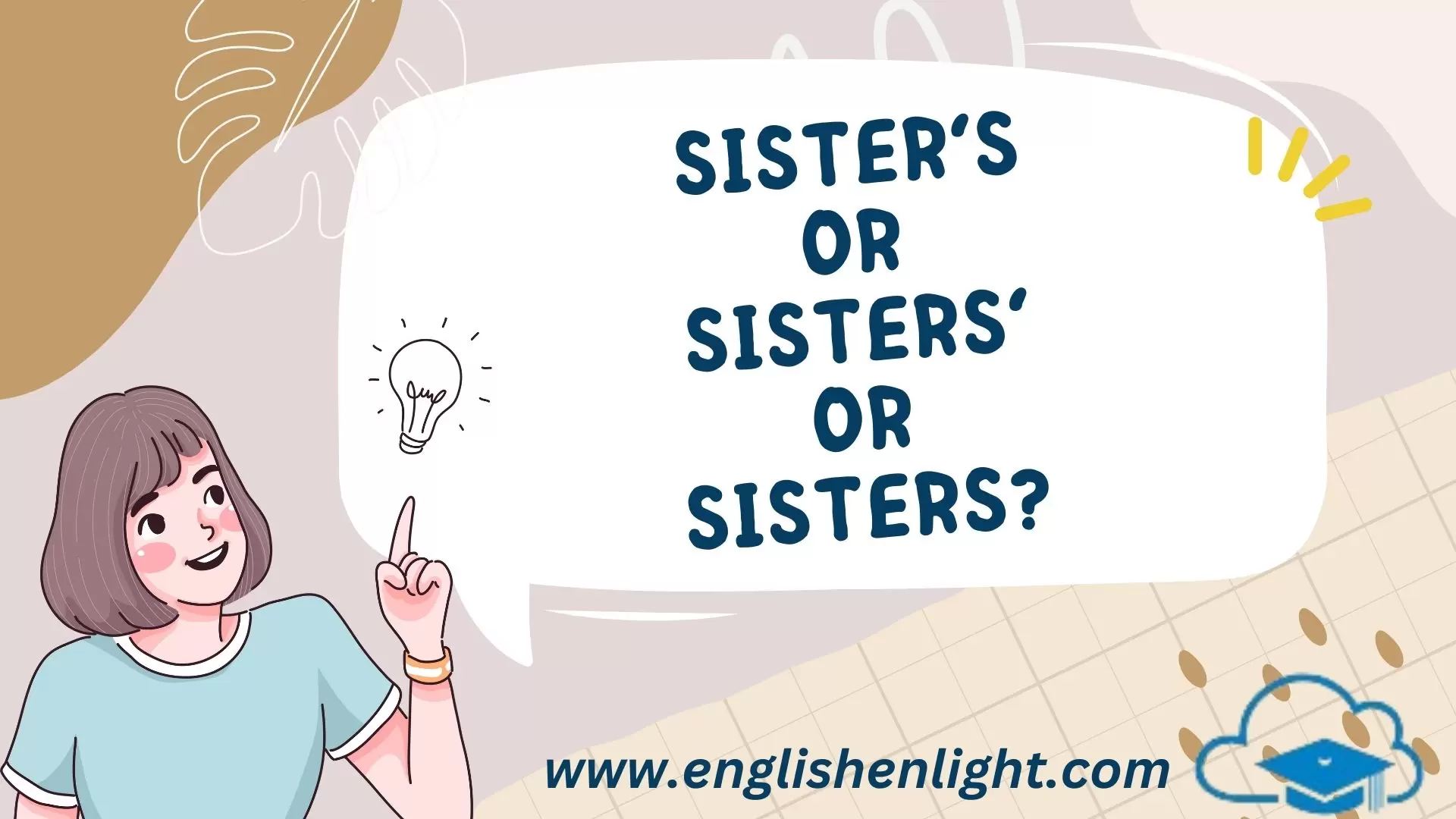Introduction
“Article explains difference between ‘sister’s’, ‘sisters”, and ‘sisters’.’ for clarity.”
In the vast expanse of the English language, nuances often arise that can perplex even the most seasoned grammarians. Among these subtleties are the distinctions between “Sister’s,” “Sisters’,” and “Sisters” – three forms that may seem interchangeable at first glance but hold distinct meanings and applications.
In this comprehensive guide, we delve into the intricacies of each term, elucidating their grammatical roles and providing practical examples to illuminate their usage.
Overview
Within the labyrinthine landscape of the English language, discerning the differences between “Sister’s,” “Sisters’,” and “Sisters” is essential for precise communication. These terms, while appearing interchangeable, hold distinct grammatical significance and usage contexts.
This guide meticulously examines their nuances, elucidating their grammatical functions and providing practical examples to illustrate their application. By navigating through scenarios encompassing singular possession, joint ownership, and plural reference, readers gain a comprehensive understanding of when and how to employ each term effectively, enriching their linguistic fluency and clarity of expression.
Table of Forms
| Form | Example | Function |
| Singular | Sister | Refers to one female sibling. |
| Plural | Sisters | Refers to multiple female siblings. |
| Singular possessive | Sister’s | Indicates possession by one sister. |
| Plural possessive | Sisters’ | Indicates joint possession by multiple sisters. |
Defining the Terms: Sister’s, Sisters’, and Sisters

Before delving into the diverse contexts in which these terms are employed, it’s essential to establish their fundamental definitions.
- Sister’s: This term refers to the possessive form of “sister,” indicating ownership or association with a singular sister.
- Sisters’: On the other hand, “sisters’” represents the possessive form applicable to multiple sisters, denoting joint ownership or association.
- Sisters: While not possessing the possessive apostrophe, “sisters” serves as the plural form of “sister,” referring to two or more siblings of the female gender.
With these distinctions in mind, let us explore five scenarios where each of these terms finds its rightful place in the realm of English grammar.
Scenario 1: Singular Possession with Sister’s

In scenarios where a single sister possesses or is associated with something, the term “sister’s” is aptly employed. Consider the following example:
Example: Emily admired her sister’s painting skills, marveling at the intricate details in each brushstroke.
In this instance, the possessive form “sister’s” signifies that the painting skills belong to a singular sister, Emily’s sibling.
Scenario 2: Joint Possession with Sisters’

When multiple sisters jointly possess or are associated with something, the term “sisters’” is utilized. Let’s examine an example:
Example: The sisters’ decision to start a business together stemmed from their shared entrepreneurial spirit.
Here, “sisters’” denotes that the decision to start a business is a collective endeavor involving more than one sister.
Scenario 3: Plural Form without Possession

In contexts where no possession is implied, and the term simply refers to multiple sisters in a general sense, the plural form “sisters” suffices. Consider the following scenario:
Example: The conference was attended by hundreds of sisters from various parts of the world, all united by a common cause.
In this instance, “sisters” refers to numerous female siblings without indicating possession or association with any specific entity.
Scenario 4: Ambiguity in Context

In certain instances, the absence of contextual cues may lead to ambiguity in determining whether singular or plural possession is intended. Let’s examine a scenario that exemplifies this ambiguity:
Example: She borrowed her sisters’ car for the weekend.
In this sentence, without additional context, it’s unclear whether the speaker is referring to the collective possession of multiple sisters (sisters’) or the possession of one sister (sister’s) among several. Contextual clarity is crucial in such cases to ensure proper interpretation.
Scenario 5: Indeterminate Possession

There are scenarios where possession is implied, but the specific number of sisters involved remains unspecified. Let’s explore an example:
Example: The photograph captured the sisters’ joyful reunion after years spent apart.
In this sentence, “sisters’” suggests possession without specifying whether the reunion involves two sisters or more. The possessive form encompasses all potential sisters
involved in the reunion.
Practical Application in Context

Understanding the theoretical aspects of language is essential, but practical application solidifies comprehension. Let’s delve into real-world examples to illustrate how “Sister’s,” “Sisters’,” and “Sisters” are used in various contexts, allowing readers to grasp their usage with clarity and confidence.
Navigating Grammatical Complexity

The intricacies of grammar can often present challenges, especially when it comes to possessives. In this section, we break down the complexities surrounding “Sister’s,” “Sisters’,” and “Sisters,” providing clear explanations and practical tips to navigate through grammatical intricacies effortlessly.
Addressing Common Misconceptions

Misconceptions can hinder understanding and lead to miscommunication. Here, we debunk common myths and clarify misunderstandings surrounding the usage of “Sister’s,” “Sisters’,” and “Sisters,” empowering readers to discern the nuances with precision and accuracy.
Conclusion
In the intricate tapestry of the English language, the distinctions between “Sister’s,” “Sisters’,” and “Sisters” play a pivotal role in conveying precise meaning and intent. Understanding when to employ each term is essential for effective communication and clarity of expression.
Whether indicating singular possession, joint ownership, or simply referring to multiple siblings, mastery of these nuances enhances one’s command of the language. By navigating through diverse scenarios and grasping the subtleties of usage, one can wield these terms with confidence and finesse, enriching their linguistic repertoire in the process.
Read Also More: Community’s or Communities’ or Communities?

Hi, I’m Alexander, the admin of the website “English Enlight.” My job is to make sure everything runs smoothly on the site. I help users if they have any problems and make sure all the information is correct. It’s important to me that everyone enjoys using our website and learns something new about English every time they visit. If you need any help or have any questions, feel free to reach out to me!













